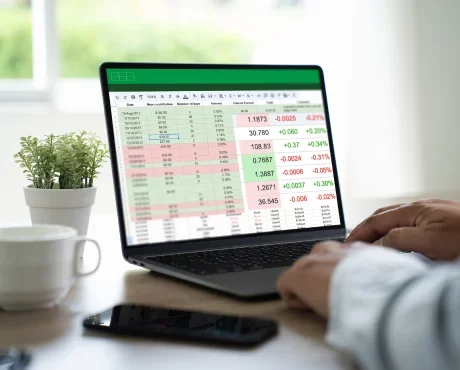Traditional costing methods, such as standard or absorption costing, were designed decades ago for a very different kind of factory- one where labor was the main cost and overheads were easy to spread out. But today’s factories look a lot different. Automation, complex processes, and fluctuating input prices make it harder to rely on those old models.
In this blog, we’re going to break down the biggest challenges cost teams face in manufacturing today, how digital solutions are changing the game, and why a tool like Cost It Right is built to solve those problems head-on.
What’s Going Wrong with Traditional Costing?
Let’s start with what many manufacturers are dealing with daily.

1. Overhead Costs Don’t Go Where They Should
When you spread overhead based on labor hours,or any one-size-fits-all method,you’re likely misrepresenting the true cost of your products. Some products consume more resources, including machine time, setup, inspections, and tooling. Others flow through with minimal impact. But if you’re using just one driver to spread those costs, you’re misallocating, and that’s going to skew your profitability numbers.
2. Setup and Batch Costs Are Invisible
Many production lines involve frequent changeovers, batch production, and special inspections. These activities come with real costs, but standard costing systems rarely capture them properly. They’re lumped into general overhead, and that’s where a lot of valuable insight is lost.
3. Standard Costs Get Stale,Fast
Even if you update your standard costs quarterly or annually, you’re still behind. Material prices, energy rates, and even labor efficiency can change weekly,or daily. If your cost estimates don’t reflect those changes, you’re making decisions based on outdated info.
4. Everything Lives in Silos
It’s common for manufacturers to use separate systems for ERP, MES, BOM management, inventory, and quality control. And then you have costing happening in spreadsheets that someone updates manually. This setup is not only slow and prone to error,it also makes it hard to see the full picture.
5. You’re Not Using the Data You Already Have
Your machines and systems are collecting tons of data: downtime, run-time, scrap rates, energy use,you name it. But most costing systems don’t tap into this rich data. That means you’re leaving valuable insight on the table.
6. Audits and Traceability Are a Headache
When the CFO or external auditor requests proof of cost assignment, it can take hours (or days) to locate the necessary numbers. Traditional systems just aren’t built for easy traceability.
How Digital Costing Tools Solve These Problems
The good news? Newer, digital-first costing solutions are built for how modern manufacturing works. Let’s look at how they help.

1. They Use Smarter Allocation Methods
Instead of assigning costs based on a single factor, such as labor hours, digital costing tools enable you to apply multiple drivers. For instance, you might assign costs based on how long a machine runs, how often quality checks happen, or how many times a line is set up for a new batch. This kind of detailed tracking helps you understand the true cost of each product more clearly.
2. They Pull in Real-Time Data
Modern platforms can connect directly to your ERP, MES, inventory system, and even IoT sensors on your machines. That means when material prices go up, or a batch takes longer than expected to run, your costing reflects it right away.
3. They Let You Run “What-If” Scenarios
Ever wondered what would happen to your margins if raw material prices jumped 10%? Or if you reduced batch sizes? With digital costing tools, you can model these scenarios before making any changes on the floor.
4. They Bring Everything Into One Place
No more jumping between spreadsheets and disconnected software. A strong digital costing platform ties everything together,materials, labor, overhead, scrap, and more,into a single source of truth. That means fewer errors and faster decision-making.
5. They Make Use of Shop-Floor Data
You’ve already invested in automation and data collection,now it’s time to use that information in your costing. Machine run time, operator performance, energy usage,all of it can be part of your cost calculation.
6. They’re Built for Traceability
Each cost line,whether it’s for materials, labor, or overhead,can be traced back to its source. This makes it easier to explain your numbers, pass audits, and identify where costs are going off track.
Also Read: How Automotive Manufacturers are Saving with Cost It Right
Why “Cost It Right” Stands Out
There are a few digital costing tools out there, but Cost It Right is designed specifically with manufacturers in mind. Here’s why it’s worth considering:
Made for the Factory Floor
Cost It Right understands how manufacturing works. It supports detailed activity mapping, so you can track costs based on setups, machine time, inspections, materials, and more. It doesn’t try to force your processes into a generic model.
Real-Time Data Feeds
This tool connects with your existing systems, so costs are always up to date. Whether a material price changes or a batch is rerun, the system updates your cost view instantly.
Time-Driven and Actual Costing Together
Some platforms require you to choose between standard or actual costing. Cost It Right gives you the flexibility to use time-driven costing where it makes sense, and actual data when you need more precision.
Powerful Scenario Modeling
You can test out pricing strategies, production volume changes, supplier swaps, and more,all before making real-world changes. This kind of foresight helps avoid surprises and improves planning.
Full Cost Transparency
Every cost element is linked to a source,whether that’s a PO, time entry, or production record. That means you can explain your numbers with confidence, whether it’s to internal teams or external auditors.
What You Can Expect to Gain
Still not sure if switching to a digital costing platform is worth it? Here’s what many manufacturers experience after making the move:
- Better Margin Accuracy: Products that used to look profitable may turn out to be loss-makers,and vice versa. When your costing is more accurate, it’s easier to make informed choices about which products to focus on,or adjust.
- Less Waste: By tracing costs back to inspections, setups, or rework, you can spot waste and inefficiency faster. You’re also less likely to run into unexpected cost issues when reviewing your monthly numbers.
- More Confident Pricing: You’ll be able to quote customers based on real, current data,not on rough estimates or old standards.
- Fewer Spreadsheets: By automating the collection and calculation of cost data, you reduce manual tasks and complete your month-end reports more quickly.
- Built-in ESG Costing: Track environmental impact as part of your product cost without needing a separate system.
Wrapping Up
Costing isn’t just a number on a report,it drives pricing, strategy, and profitability. And if you’re still relying on outdated methods, you’re probably missing opportunities, making reactive decisions, and risking margin loss.
Digital costing tools bring clarity and speed to a messy, manual process. And among those tools, Cost It Right stands out for its manufacturing focus, real-time visibility, and practical usability.
If you’re ready to move away from guesswork and toward accurate, real-time costing that reflects what’s happening on your shop floor, it’s time to explore Cost It Right.





